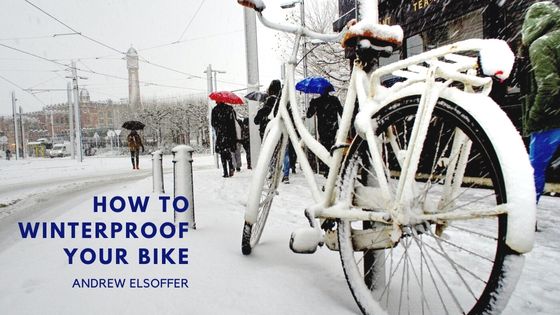Winter may be difficult for motivation, but it’s also hard on your bike and equipment. Using the right tools and adhering to an essential maintenance schedule can help your bicycle survive the wetness, grit, and filth the winter season brings. If you do everything correctly, you can ride securely and comfortably till spring.
Mudguards will significantly improve your comfort and pleasure if you want to keep surface water off the lower half of your body. Traditional full-length mudguards can be installed with mounts and the necessary room and clearance. Several mudguards will attach directly to any bike if your frame lacks mounting.
One of the most irritating aspects of riding in the cold is getting a flat tire. They happen more often in the winter because rain spreads potentially sharp fragments onto the road and is an effective lubricant for cutting through tires. Try to find a tire with a substantial, strengthened breaker belt wedged between the carcass and rubber tread. This will lessen the chance that glass or flint may pierce the sensitive inner tube.
In addition to thickness, tires must be pumped correctly. A small pump may be appealing since it is portable and only takes up a little room in a jacket pocket, but they are less effective at filling a tire rapidly to a safe pressure. Pressure is crucial in the winter for stability and robustness. While 120 psi may be OK during the summer when roads are dry, dropping to 80–90 psi is not unusual as the streets become wetter.
Other than a flat, the last thing you want on a ride is a mechanical problem. Carry a saddle bag stocked with a chain breaker, at least one spare tube, a few patches, and tire levers. Having the essentials should enable you to repair the majority of roadside mechanicals. Instead of cluttering your pockets with unnecessary items like food or cash, you can keep everything in a saddle bag on the bike for easy access.
Riding during the winter puts a lot of strain on all moving parts. Adopt a regular cleaning and service routine. Ideally, it would be best if you cleaned your bike right after a muddy ride to prevent rust from forming. As parts deteriorate over time, a chain will gradually stretch. A chain checker tool is fairly priced and saves you a lot of money. The chainrings, cassette, and jockey wheels will all deteriorate if a chain’s wear is not monitored, and ultimately the whole gearbox will need to be replaced. You will significantly increase the life of the transmission by routinely changing the chain.

